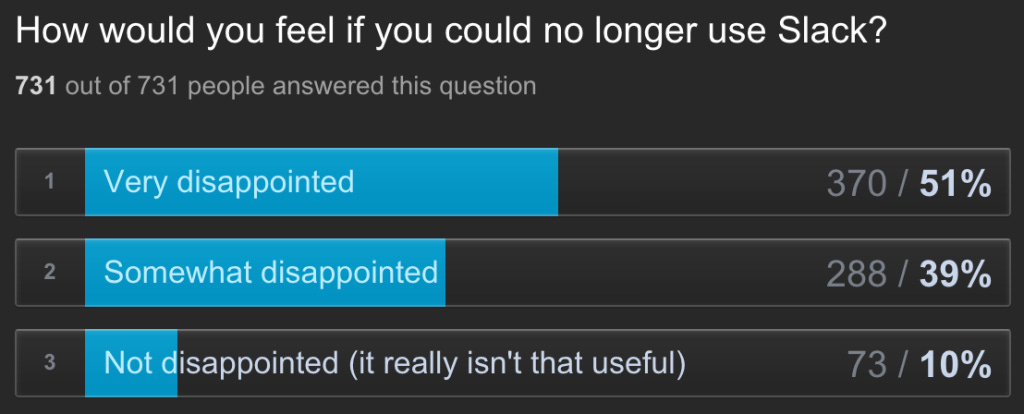Last week we discussed the importance of building for your believers. It was the most popular post on this newsletter yet!
The idea was simple:
Start building community with the people who are most likely to start making meaningful contributions to your community immediately. Don’t spend energy recruiting people at the bottom of the “commitment curve” until you’ve found Community-Member-Fit.
A reader asked an important follow-up question. It’s perhaps *the* question:
“How do you know you’ve reached Community-Member-Fit?”
Refresher: Community-Member-Fit (which I’ll usually refer to as CMF) is the point at which members are consistently providing meaningful value to each other without being asked.
Before we dive into the “how to”, let’s clear up three common misconceptions about Community-Member-Fit:
CMF is never going to be perfectly measurable, it’s a science and an art.
Marc Andreessen, the investor and Netscape co-founder who coined the term “Product-Market-Fit” made it clear that there’s an element of “gut feel”.
“You can always feel when product/market fit is not happening,” he said. “The customers aren't quite getting value out of the product, word of mouth isn't spreading, usage isn't growing that fast, press reviews are kind of ‘blah,’ the sales cycle takes too long, and lots of deals never close.”
“You can [also] always feel product/market fit when it’s happening,” he adds. “Customers are buying the product just as fast as you can make it — or usage is growing just as fast as you can add more servers. Money from customers is piling up in your company checking account. You’re hiring sales and customer support staff as fast as you can.”
Similarly, you can feel it when a community is clicking.
Signals that you have CMF:
Members are coming back regularly without being asked
Interaction is happening without you facilitating
Members are enforcing community rules and guidelines on your behalf
Members are self-organizing events
Members are recruiting other members
The vibes are immaculate
Members are giving you unsolicited feedback
CMF isn’t a yes/no question, it’s a spectrum.
Instead of asking, “Do we have CMF?”, ask, “How strong is our CMF?” It’s a spectrum.
CMF isn’t a fixed point, it’s a moving target.
You will move up and down the spectrum over time. You can gain strong fit, lose it, and gain it again. The world is constantly changing, and so is your community.
You must constantly be reinventing your community, cutting things that are no longer working, experimenting with new experiences to keep things fresh.

Ok, with those misconceptions cleared up, let’s talk about what you CAN do to measure CMF quantifiably…
How to Measure Community-Member-Fit
There are two popular ways to quantifiably measure CMF using a single question and there are differing opinions on which one is better.
The first one is pretty well known…
The Net Promoter Score (NPS)
To measure NPS, you can ask your members the question:
“How likely are you to recommend this community to a friend or colleague?“
Members choose a number from 1-10 and that gives you what is known as the “Net Promoter Score.” Here’s a good overview of how to measure NPS.
Members who rank the community 1-6 are known as “detractors”, 7-8 are “passive”, and 9-10 are “promoters”.
We’ve used NPS for years at CMX, and it worked well for us. Beth McIntyre wrote a great guide on it.
It gave us an easy way of keeping our finger on the pulse of our community overall and for specific experiences. We’d include the NPS question in our bi-annual community health surveys, and in things like post-event surveys. If a score was unusually low, it would flag that there’s something we need to look into there. If an event got a really high NPS score, that’s a good signal that we should do more events like that.
There’s one big caveat with using NPS for communities: sometimes members may not want to recommend a community they love to others, because they value privacy, or because they like it small. Community is one of those things that people may want to keep the same, if they love it. That can really skew the results you get from an NPS survey.
That’s why other community teams, like my friend Evan Hamilton who runs community at Hubspot (previously at Reddit and CMX) have started using a different method…
The Community-Member-Fit-Score (CMFS)
“CMFS”, as I like to call it, was inspired by Sean Ellis’ approach to measuring Product-Market-Fit (here’s his guide). His method has been used by thousands of companies.
Like NPS, the CMF Score consists of asking members just one question:
“How would you feel if you could no longer access this community?”
The four options members can choose are:
Very disappointed
Somewhat disappointed
Not disappointed (it isn’t really that useful)
N/A – I no longer participate in the community
Based on Ellis’ findings of over 100 startups, “You’ll want at least 40% to say ‘very disappointed’. Companies that struggled to find growth almost always had less than 40% of users respond “very disappointed,” whereas companies with strong traction almost always exceeded that threshold.”
For a great example of how to run a CMFS survey, check out the open research Hiten Shah did to determine if Slack had found product-market-fit. He found that yes, yes they did!
Evan Hamilton made a strong case for using CMFS over NPS, giving four key reasons:
It’s simpler and worded in a human way
It focuses on value to the member
It encompasses members’ emotion
It’s a familiar term for most startup and business leaders
You can include this question in your community healthy surveys, new member surveys, after events and experiences, and anywhere else where you want to know if your community members are getting value.
The beauty of CMFS is that it provides you with a singular metric to benchmark and compare against. If more communities use CMFS, we’ll start to develop industry benchmarks.
But you don’t need industry benchmarks to start using it. Once you get a baseline of where your community is today, you can set your own benchmarks and track how your community’s rating changes over time.
CMFS isn’t the the only tool we have for determining if your community has found “fit”. Next week I’m going to share another quantitative method you can use, that will serve as a compliment to CMFS. It’s called the “Community Activation Point”.
In summary:
Community-Member-Fit is the point at which members are consistently providing meaningful value to each other without being asked
Determining CMF is an art and a science
CMF is a spectrum and is a moving target
The Community-Member-Fit-Score (CMFS) is a quantifiable method that asks members: “How would you feel if you could no longer access this community?”
Aim for 40% or more to choose “very disappointed”
🔥 New and Featured Jobs
Marketing & Community Coordinator at Blackbird Ventures - Am I biased by the fact that Joel Connolly is leading this team and he’s one of the most delightful people I know? Yes. Yes I am. Blackbird also happens to be the most legit VC in Australia and Joel’s team only put out extremely high-quality community experiences.
Head of Community at Global Income Coin (GLO) - Unlike most web3 jobs, this one is fully dedicated to solving a big social challenge (global poverty) and is a non-profit (no one is making money except those in poverty). I've been increasingly picky about which web3 jobs I accept on here, and this one really impressed me.
My job board is growing every day and there are now 70+ experienced community leads in the talent collective who are looking for their next gig.
Ready to hire your next community lead? Post your job and sign up to access the collective.
Notes
I seemed to have stirred up a debate on the future of hybrid events on LinkedIn. What’s your take?
Common Room’s Community Growth Report got me all excited because it’s the first time I’ve seen a community platform publish their customer data to provide the community industry with benchmarks. I hope it’s something all community platforms start doing. My biggest takeaway: “Cohort-based analysis showed that 72% of community-led deals closed within 90 days compared to 42% of sales and marketing-led deals." I’m thinking about writing a takeaways post from this one…stay tuned.
Elon is either completely oblivious to how humans work or he’s intentionally trying to kill Twitter. I think he’s a very effective leader of more pure technical products. He said Twitter is primarily a tech and engineering company. He’s wrong, it’s a social company. He’s in over his head.
I downloaded BeReal for the first time this week. I love how you can create completely different community experiences by just tweaking something simple like limiting when people can post. I'm enjoying getting “real” updates from my friends, and it’s anti-addictive since there’s only content to consume once per day.
That’s all for this week!
We hosted a big Friendsgiving for 14 adults and 4 babies this week. It was something we used to do in SF every year. This was our first time hosting it in NY, and we smashed together friends from all different parts of our life. Every person/couple we invited was from a different part of our life, so there were no existing cliques. It created a space where no one felt like they were an outsider. It was delightful.
Up next is Thanksgiving with our family, which we’re also hosting. Not sure why we thought hosting two massive dinners in one week was a good idea. At least I’ll have enough turkey sandwiches to last me through the winter.
Wish us luck!
-David
P.S. I have one consulting spot open right now. I only work with a few companies at a time to help them craft their community strategy and develop their community function. Think of me as a “fractional CCO”. Just reply to this email if you’d like to explore working together.






